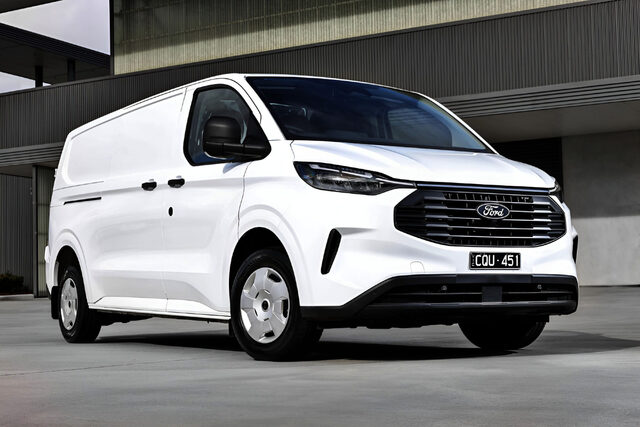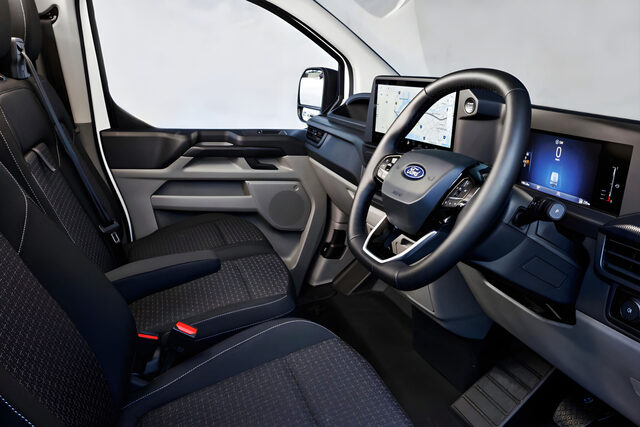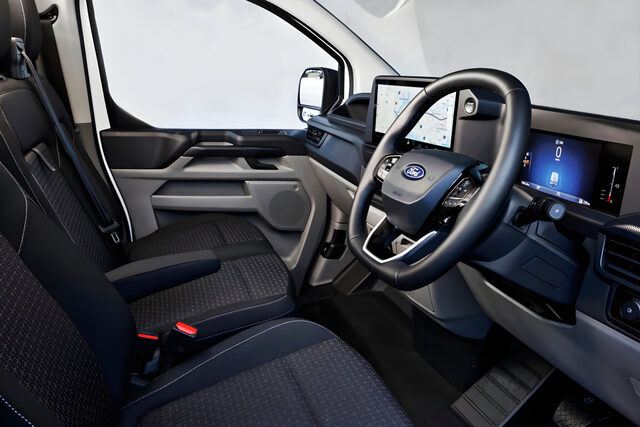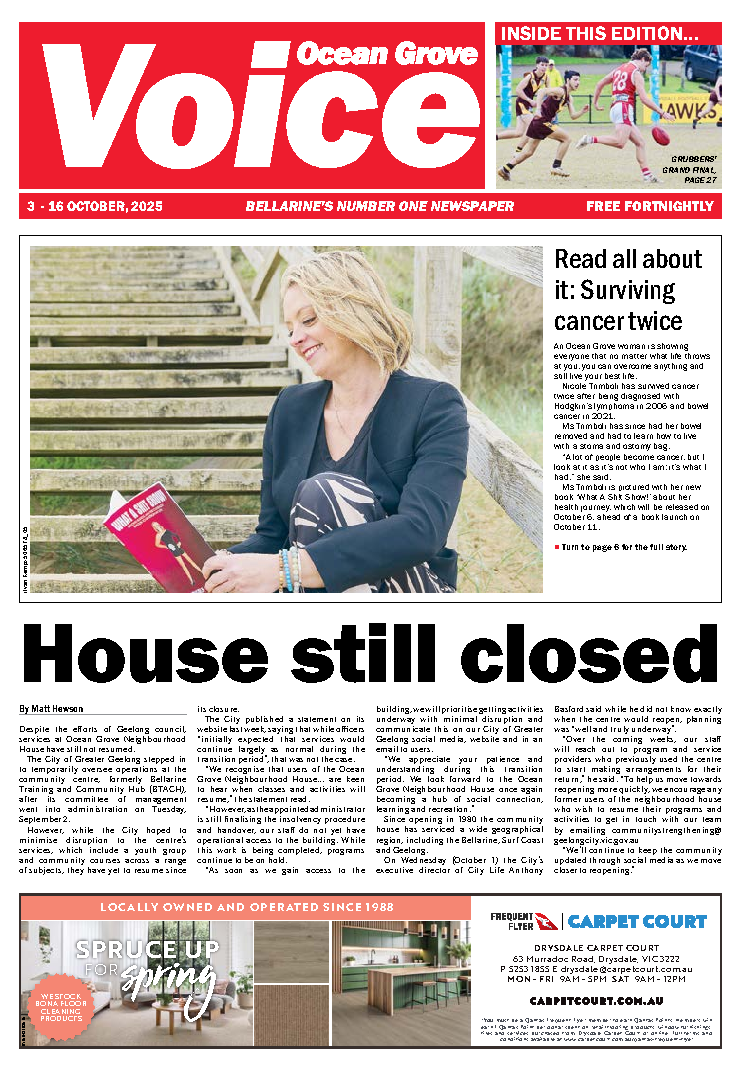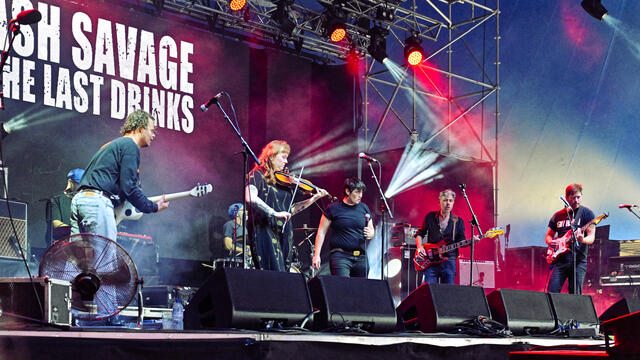The van section of the market is totally dominated by the Toyota HiAce, with 47.7 per cent of the market.
Behind it trails the Hyundai Staria Load, with a 13.8 per cent share followed closely by the Ford Transit Custom, with 13.5 per cent.
The only other significant player is the Chinese LDV G10+, with 11.2 per cent.
Transit Custom is not to be confused with Transit (no Custom) which applies to a range of larger vans.
Sitting on an all-new platform, the latest version of Ford’s mid-sized van arrived here in the first half of 2024.
While it was awarded International Van of the Year, it remains one of the more expensive options in a highly competitive section of the market where operators are keen to cut costs to a minimum.
To put this in perspective, HiAce prices start from $48,886, Staria from $46,740 and the Chinese G10+ from a low $37,358. Transit is priced from $55,990.
Due later this year, the new VW Transporter will be a rejigged Transit Custom, in the same way that Amarok is a rebadged Ford Ranger.
A plug-in hybrid will swell the ranks of Transit Custom towards the middle of the year.
STYLING
Transit Custom is one of the more stylish vans available, particularly the Sport model with its stripes and alloy wheels.
Prices start from $56,590 plus on-road costs for the short wheelbase, front-wheel drive Trend 320S.
Our test vehicle, the 320L long wheelbase version, is priced from $57,590, or $64,214 driveaway by the time you put it on the road.
It has seating for three with cloth-trimmed front seats, a separate, manual-adjust driver seat and two-seater pew for passengers, together with driver armrest, fold down tray table, barn-style rear doors and kerb-side slide entry.
The two outer seats are heated, the middle seat folds down to reveal a tray table for paperwork, and the passenger seat hides under seat storage. The faux leather steering wheel is both height and reach adjustable.
Standard kit includes push-button start, single-zone climate air, auto lights and wipers, auto high beam, adaptive cruise control, traffic sign recognition, plus front and rear parking sensors.
Transit Custom is covered by a five-year, unlimited kilometre warranty, with 12 months roadside assistance.
Service intervals are 12 months/30,000km.
INFOTAINMENT
Infotainment consists of a 13.0-inch touchscreen with Ford’s Sync4 operating system, with voice-activated controls and an embedded modem compatible with FordPass.
Other features include FM and DAB+ digital radio, Bluetooth with audio streaming, built-in satellite navigation (12 month subscription to Connected Navigation Services), wireless Apple CarPlay and Android Auto, plus four-speaker audio.
There’s also wireless phone charging, USB-A and USB-C ports plus a 12 volt outlet in the front.
SAFETY
Transit Custom is by far and away the safest van available to buy today.
Not only was it awarded five stars from ANCAP, but recorded an overall score of 96 per cent.
It performed exceptionally well across all scenarios, solidifying it as one of the safest options in its segment.
Six airbags are standard along with a rear view camera with a 180 degree split view and Pre-Collision Assist with Autonomous Emergency Braking (AEB).
There’s also Intersection Assist, Blind Spot Monitoring System with Rear Cross Traffic Alert, and Lane Keeping Aid with Lane Departure Warning. Add to this Roll over Mitigation, Reverse Brake Assist, Exit Warning and Hill Launch Assist.
Emergency Call Assist will trigger your mobile to dial 000 in the event of an accident.
Note, however, there is no provision for a children’s car seat.
ENGINES/TRANSMISSIONS
Power comes from a 2.0-litre, four cylinder turbo-diesel engine that produces 125kW of power and 390Nm of torque between 1750 and 2500 revs.
Drive is to the front wheels through an eight-speed automatic transmission with a steering column-mounted gear selector. You don’t see many of them these days.
DRIVING
Ford engineers have worked hard to improve useability of this new generation Transit Custom.
The floor has been lowered to improve ease of loading and unloading, and the overall height has been reduced to under two metres to help access height-restricted areas such as multi-storey car parks, garages, and underground loading bays.
A new access step makes climbing into the load compartment easier and a rear camera with 180-degree wide viewing capability assists rear visibility.
At 5450mm in length, the long wheelbase version is 40cm longer than its sibling, with a 40mm longer wheelbase, and stands 1980mm high.
It has a 12.1 metre turning circle.
A full width metal bulkhead is fitted, separating the cabin and cargo area, with a window and load-through hatch.
Our test vehicle was fitted with a moulded vinyl cargo floor liner, with eight tie-down points and LED lighting, but lacked any wall or roof panels to protect the bodywork.
The load area is 1425mm high and 3002mm long, extending to 3450mm with the load-through hatch, with 1392mm between the wheel arches.
Maximum load capacity is 6.8 cubic metres and it has a 2500kg tow capacity.
Unless you make use of the tie downs anything placed in the back is going to slide around and could possibly be damaged if you are forced to make an emergency stop. A combined alarm and immobiliser are fitted.
There’s auto stop-start and four drive modes from which to choose: Normal, Eco, Slippery, Tow/Haul.
With a 70-litre tank, fuel consumption is a claimed 8.0L/100km. It also has a 20-litre AdBlue reservoir that helps clean exhaust emissions and that needs to be topped up occasionally.
There’s disc brakes front and back, independent rear suspension and an electric parking brake.
Trend rolls on 16-inch steel wheels with 215/65 rubber and plastic wheel covers finished in ‘Sparkle’ silver.
A full size steel spare is provided which is located under the rear.
Now I used to work as a courier with Australia Post and the fleet consisted mainly of rear-drive LDV G10s, rear-drive Hyundai iLoads and front-drive VW Transporters.
Some people might think rear wheel drive is an advantage, but without anything in the back, which occurs as the day wears on — traction or lack of it can be a problem.
I once had to be pulled off a grass nature strip because the rear wheels simply could not find traction on the slick grass.
Front-drive vehicles with the weight of the engine over the wheels don’t have this problem. I kid you not.
The entry model comes with a single, kerb-side sliding door and barn-style rear doors.
A second slider and/or a lift-style tailgate are optional, but must be specified at the time of order.
Most of the vans we drove were kitted out in this way and the liftgate was great in the rain because it provided some shelter.
Getting into the van for the first time, I was disappointed to find a grab handle is not provided. It should be standard.
The driver seat has eight-way manual adjustment including lumbar and the steering wheel is tilt and reach adjustable.
But the seating feels short and minimalist, and a long way from what we’d describe as comfortable. Check out the seat in the G10+.
Double-decker exterior mirrors are fitted, with a wide angle section at the bottom, a driver’s footrest is provided and the floor covering is rubber.
The driver faces a 12.0-inch display which incorporates a 7.0-inch digital colour instrument cluster that is configurable.
A start button is located near the top left hand corner of the display from where it is a step up to the infotainment unit rather than flowing seamlessly from one to the other.
Shrug.
Alas, there are no physical controls for the climate system which is controlled from the touchscreen.
Like most diesel vans it gets along fairly briskly. You change gears manually with the shifter, but who’s going to bother?
The steering and brakes are excellent, while handling one way or the other is not really a consideration.
What’s not so good is the adaptive cruise/autonomous braking system. Travelling through one of Sydney’s many underground tunnels generated numerous false alarms. It saw the speed drop from a nominated 90km/h to 60 or 70km/h for no discernible reason, unless perhaps it was picking up the exit limits.
With daylight dead ahead, it false-alarmed again as we exited the tunnel, this time dropping to a low as 37km/h, much to the consternation of those around us.
What the hell?
The system also seems to have a problem reading electronic speed signs. All in all, it needs some work and in this context, it is difficult to understand how the judges missed this one?
In terms of fuel consumption, we were getting a long-term fuel average of 7.8L/100km after 2124km, a little better than the manufacturer’s claim.
SUMMING UP
Ford Transit Custom is as safe as it gets for this type of vehicle, with a near perfect score of 96 per cent in crash tests.
But, and it’s a big BUT, bosses generally put price before the safety of their employees, although they would never admit to it – and this is Ford’s Achilles heel.
It’s just too damned expensive compared with its competitors, all of which are several thousand dollars cheaper and as such much more boss friendly.
Given the choice we would, however, spend the extra $1000 for the long wheel base version as tested – you’d be silly not to.
RATINGS:
Looks: 7/10
Performance: 7/10
Safety: 8/10
Thirst: 7.5/10
Practicality: 7.5/10
Comfort: 6/10
Tech: 7/10
Value: 6/10
Overall: 7/10

